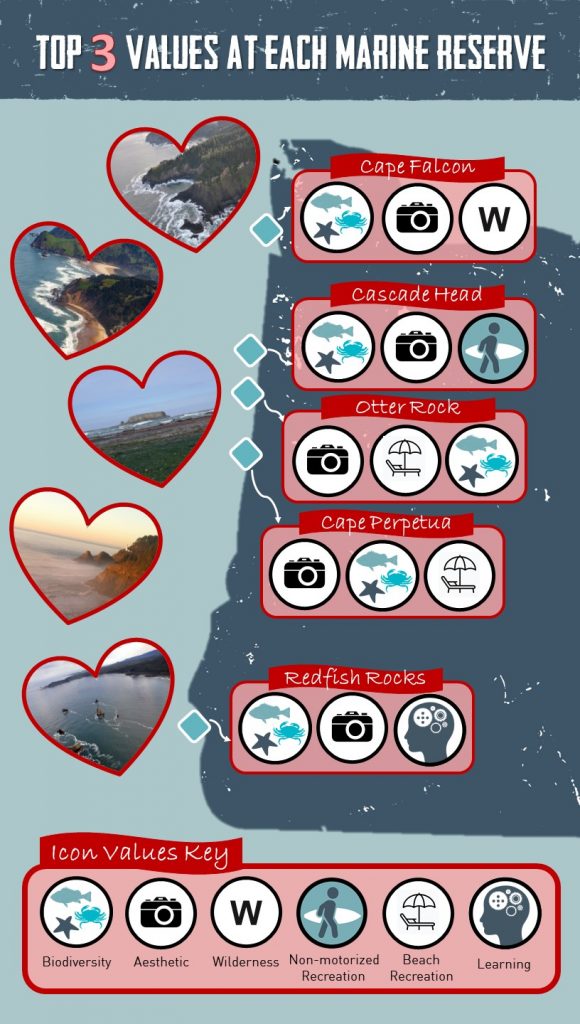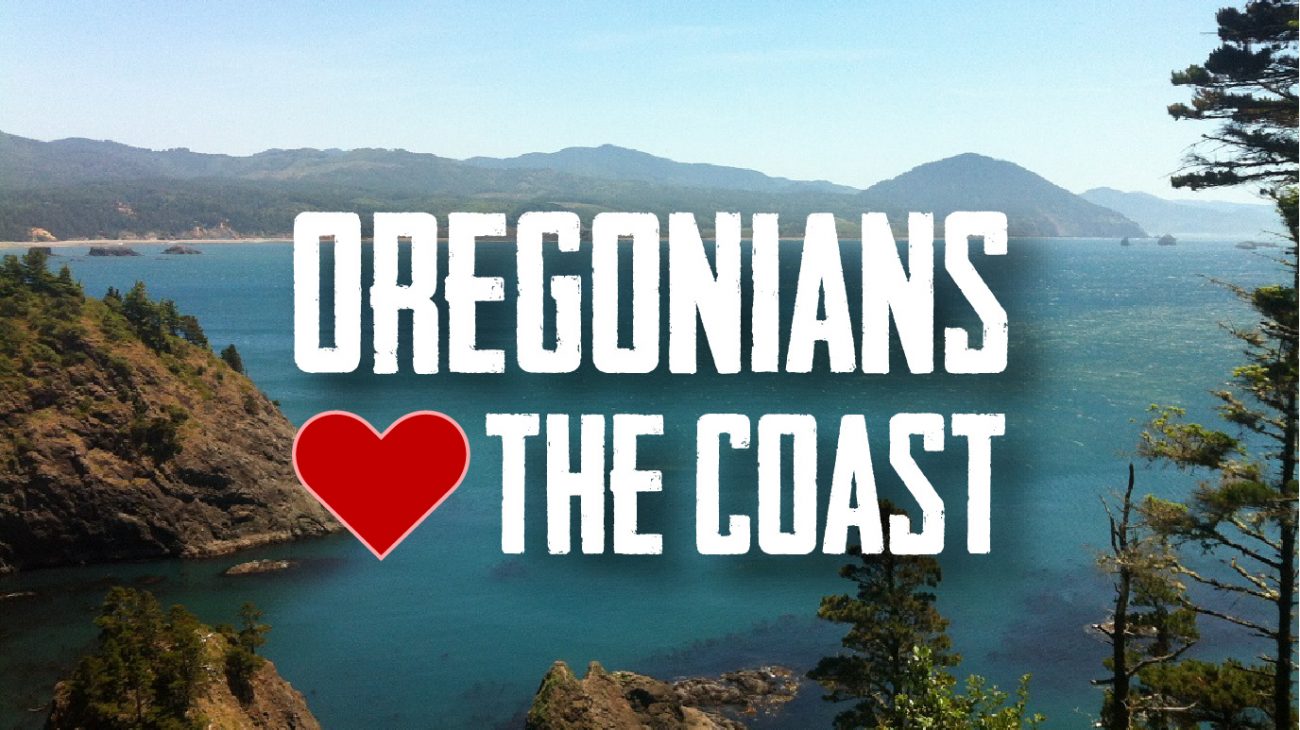To celebrate Valentine’s Day this month, we’re taking a look at what people love about the Oregon coast. We’re drawing from a recent study out of Portland State University (PSU) that looks at how Oregonians value different places on the coast.
This study used an online survey with an open invitation for volunteers to participate (i.e. a convenience sample). One part of the survey showed a map of the Oregon coast and a list of 15 potential values. The participants placed “pins” for each value on the map in places that they thought best represented those values. One example of a value was “Aesthetic/Scenic” which meant “I value these places for their views, unique landforms, unique waveforms, unique sounds, or other sensory experiences.” This process of placing pins on a map is called a public participation geographic information system (PPGIS) exercise and is a tool often used in spatial planning.
A total of 318 online participants placed 9,700 pins in coastal locations. Most of the participants in this statewide survey were from the Willamette Valley, the Central Coast, and the North Coast. Some pin clusters were in locations that we would expect. For example, historic values were associated with Astoria, where Fort Clatsop is located. Additionally, many educational value pins were placed in Newport, home of the Oregon Coast Aquarium and Hatfield Marine Science Center, and in Coos Bay/Charleston, home of the Oregon Institute of Marine Biology. Charter and sport fishing value pins were placed in the Tillamook/Garibaldi region and the Newport/Depoe Bay region.

So, what values were associated with Oregon’s marine reserves? To answer this question, the PSU team looked at pins placed inside each marine reserve and associated marine protected area. In the Valentine’s themed infographic below, you can see the top three values (most pins) for each marine reserve ranked from left to right. For all of the marine reserves, two of the top three values were biodiversity and aesthetic values. The third value was unique for most marine reserves. For example, wilderness was valued at the Cape Falcon Marine Reserve, while non-motorized recreation (e.g., surfing, kayaking, etc.) was valued at the Cascade Head Marine Reserve.

